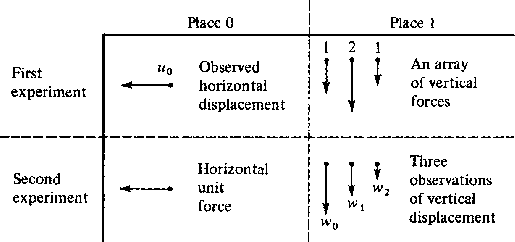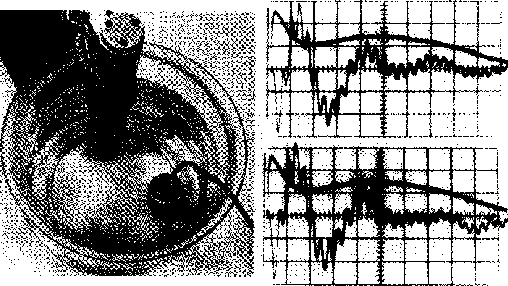The principle of reciprocity states that a source and receiver may (under some conditions) be interchanged and the same waveform will be observed. This principle is often used to advantage in calculations and may also be used to simplify data collection. It is somewhat amazing that this principle applies t other earth with its complicated inhomogeneities. Intuitively, the main reason for validity of the reciprocal principle is that energy propagates equally well along a given ray in either direction. Either way, it goes at the same speed with the same attenuation. This is true for all common types of waves.
Little more would need to be said if all waves were scalar phenomena with scalar sources and scalar receivers as, for example, acoustic pressure waves with explosive sources and pressure-sensitive receivers. The situation becomes more complicated when the sources or receivers are moving diaphragms, because then their orientations become important. The directional properties of the source and receiver are often referred to as radiation patterns. To apply the reciprocity principle it is necessary to regard the radiation patterns as attached to the medium, not as being attached to the source and receiver. Thus, when source and receiver are said to be interchanged, it is only a scalar magnitude which is interchanged; the radiation patterns stay fixed at the same place. These general ideas are made more precise in the following derivation. It will be seen that the notion of rays actually turns out to be irrelevant. Reciprocity also works in diffusion and potential problems.
Theoretical treatments are often somewhat hard to read.
They often begin by specifying that the differential operator along with suitable boundary conditions should constitute a self-adjoint problem.
This means that when you reexpress the differential equations in difference form you discover that the matrix of coefficients is symmetric.
Let us take the example of acoustic waves in one dimension.
Newton's equation says that mass density ![]() times accelerations
times accelerations
![]() equals the negative of the pressure gradient
equals the negative of the pressure gradient ![]() plus the external force Fx.
Utilizing
plus the external force Fx.
Utilizing ![]() time dependence we have
time dependence we have
![]()
| (1) |
| (2) |
![\begin{displaymath}
\left[ \begin{array}
{cccccc} \frac{1}{I_{0}} & 1 & & & & \v...
...{0} \\ V_{1} \\ F_{1} \\ V_{2} \\ F_{2} \end{array} \right]\end{displaymath}](img132.gif) |
(3) |
Now with all this fuss we have gone through to obtain the matrix (9-4-3),
the only thing we want from it
is to observe that the matrix is indeed a symmetric matrix
(even if ![]() and K-1 were functions of x).
In the exercises it is shown that a symmetric matrix
may also be attained in two dimensions.
That the matrix is symmetric is partly a result
of the physical nature of sound
and partly a result of careful planning on the part of the author.
To obtain the correct statement of reciprocity in other situations
you may have to do some careful planning too.
The essence of reciprocity is that since the matrix of (9-4-3)
is symmetric then the inverse matrix will also be symmetric.
Premultiplying (9-4-3) through by the inverse matrix
we get the responses as a result of matrix
multiplication on the external excitations.
and K-1 were functions of x).
In the exercises it is shown that a symmetric matrix
may also be attained in two dimensions.
That the matrix is symmetric is partly a result
of the physical nature of sound
and partly a result of careful planning on the part of the author.
To obtain the correct statement of reciprocity in other situations
you may have to do some careful planning too.
The essence of reciprocity is that since the matrix of (9-4-3)
is symmetric then the inverse matrix will also be symmetric.
Premultiplying (9-4-3) through by the inverse matrix
we get the responses as a result of matrix
multiplication on the external excitations.
![\begin{displaymath}
\left[ \begin{array}
{l} p_{0} \\ u_{0} \\ p_{1} \\ u_{1}...
...{0} \\ V_{1} \\ F_{1} \\ V_{2} \\ F_{2} \end{array} \right]\end{displaymath}](img133.gif) |
(4) |
In a realistic experiment it may not be possible to have a pure volume source or a pure external force. In other words, the external source may have some finite, nonzero impedance. Then the first experiment we would perform would be with the excitation at the middle, getting for the end response:
| (5) |
| (6) |
In such a more general case we may denote the right-hand vectors
in (9-4-5) or (9-4-6) by ![]() to denote excitation and the left-hand vectors by
to denote excitation and the left-hand vectors by ![]() to denote response.
Using
to denote response.
Using ![]() for the matrix of (9-4-5) and
for the matrix of (9-4-5) and ![]() for the transposed matrix,
(9-4-5) and (9-4-6) would be
for the transposed matrix,
(9-4-5) and (9-4-6) would be
| (7) | ||
| (8) |
Now let us deduce a physical statement from (9-4-7) and (9-4-8).
First take the inner product of (9-4-7) with ![]()
![]()
![]()
| (9) |
 |
An example of an elastic system with vector-directed displacement and force vectors is depicted in Figure 9-2. A laboratory example by J. E. White which combines electromagnetic, solid, liquid, and gaseous media is down in Figure 9-3. A geophone is a spring pendulum couped to an induction coil. The first geophone is mounted on a pipe which rests on the bottom of a glass desiccator. The second geophone is attached to the glass with a chunk of modeling clay, below the water level. The top pair of traces shows the (source) current into the first geophone and the (open circuit) voltage at the second; the bottom traces show the current in the second geophone and the voltage at the first.
 |
Write a set of ![]() equations for the vector
equations for the vector
![]() .Make it come out symmetric and in an obviously orderly form.
.Make it come out symmetric and in an obviously orderly form.